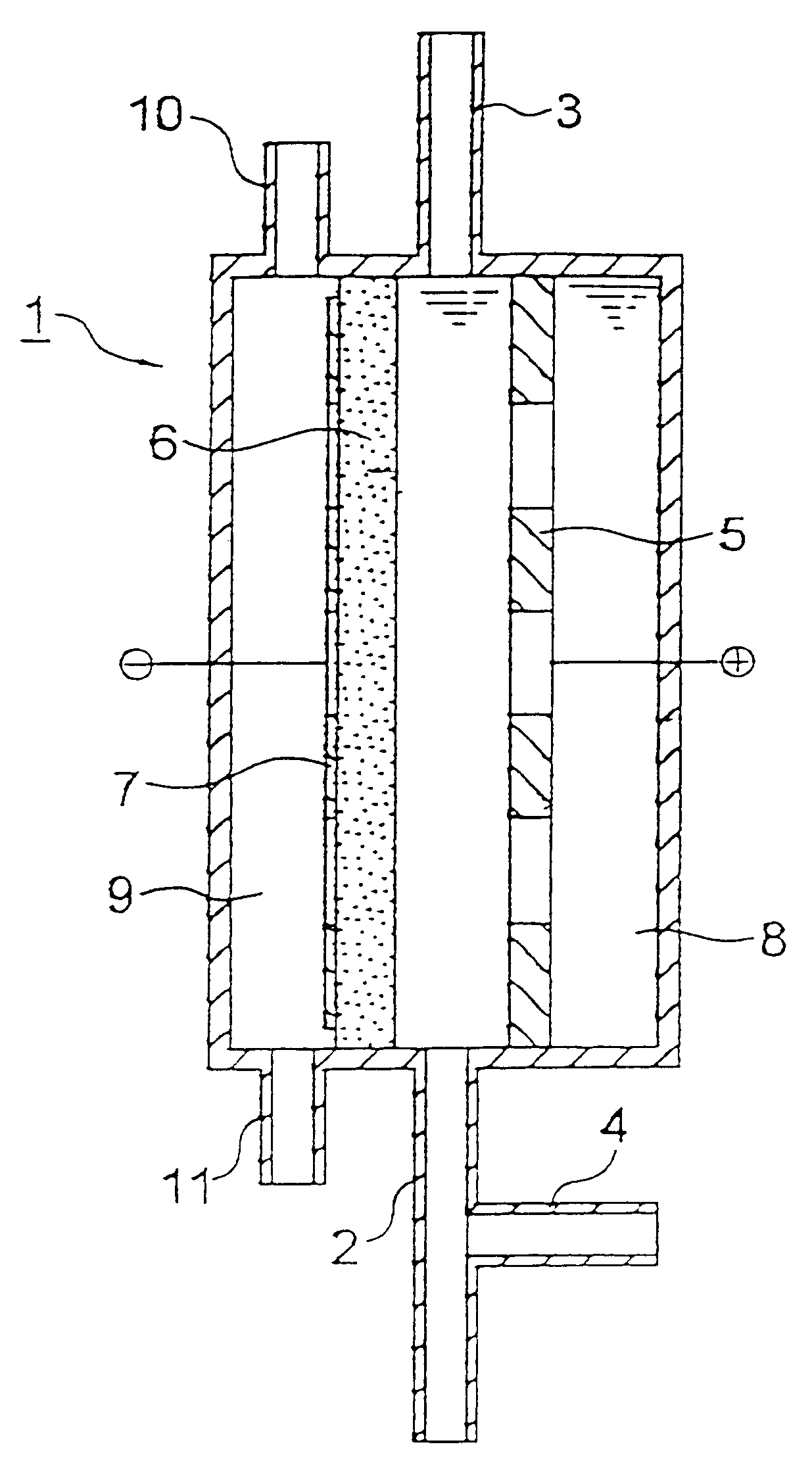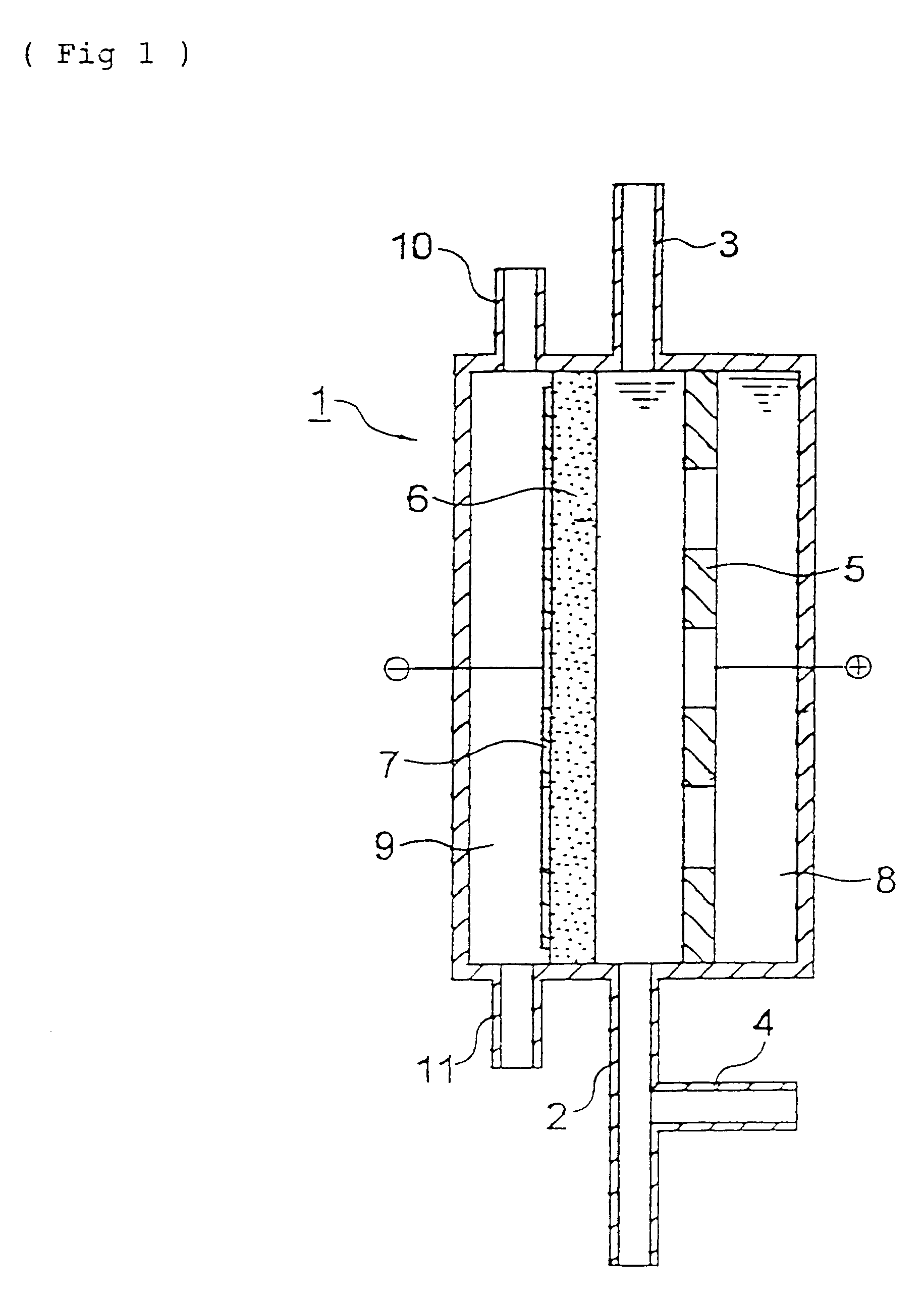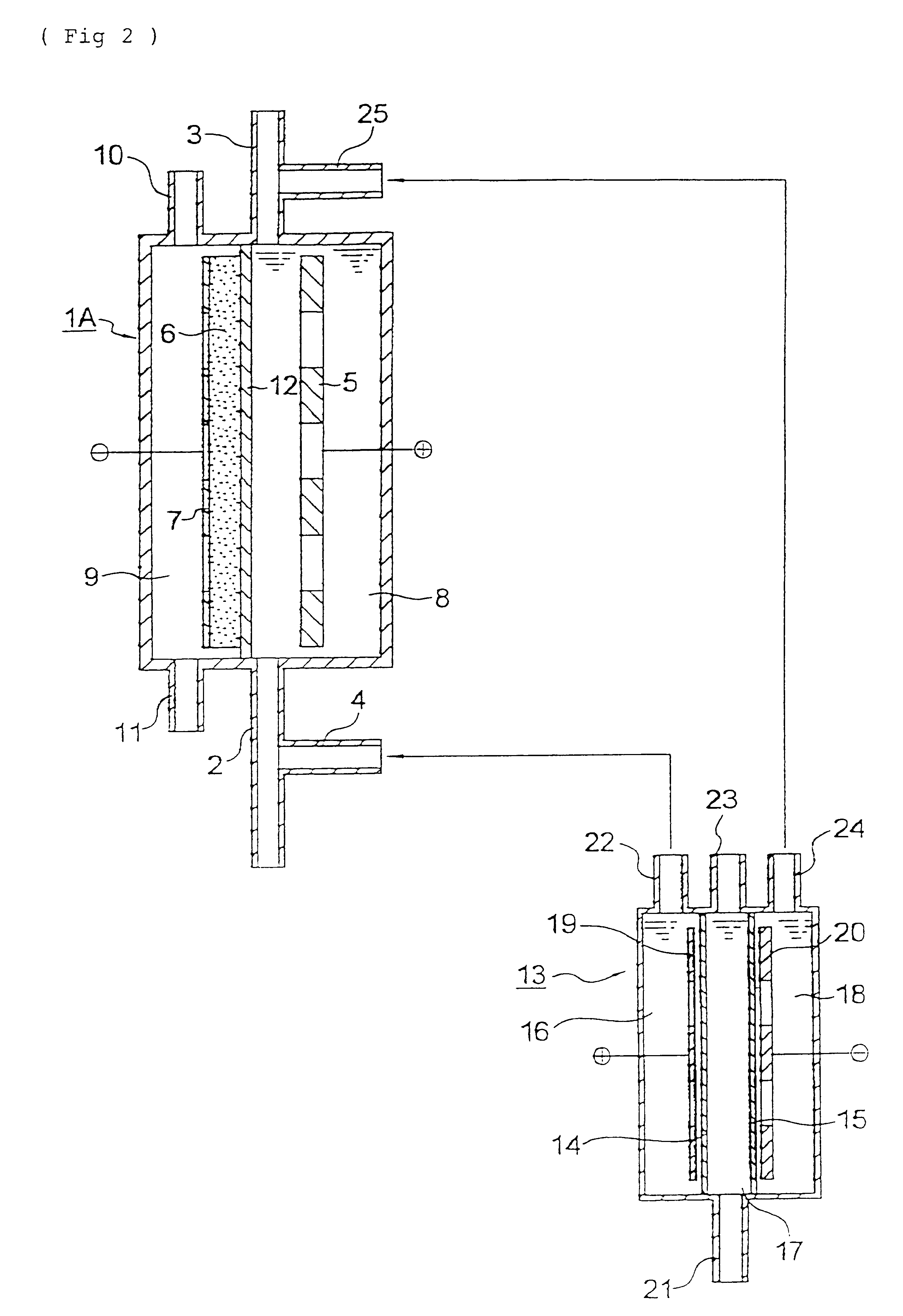Method and apparatus for water treatment
a technology of water treatment and water treatment chamber, which is applied in the direction of electrochemical methods, water/sewage treatment by oxidation, water/sewage treatment by ion exchange, etc., can solve the problem of insufficient decomposition of the substance to be decomposed, the incineration of wastes is regarded as a safety problem, and the prohibition of chlorine us
- Summary
- Abstract
- Description
- Claims
- Application Information
AI Technical Summary
Problems solved by technology
Method used
Image
Examples
example 1
Iridium oxide (IrO.sub.2) catalyst was deposited on a perforated titanium plate by a pyrolytic method in an amount of 10 g / m.sup.2 to obtain an insoluble electrode for use as an anode.
A graphite powder (TGP-2, manufactured by Tokai Carbon Co., Ltd.) as a catalyst was kneaded together with a PTFE resin, and the mixture was burned at 330.degree. C. to obtain a 0.5 mm-thick sheet for use as an oxygen gas electrode. The anode and the cathode were disposed apart from each other at a distance of 5 mm, without disposing a diaphragm, to fabricate an electrolytic cell for water treatment having the constitution shown in FIG. 1 and having an effective electrolysis area of 20 cm.sup.2.
Tap water (liquid to be treated) was fed to the space between the anode and cathode of the electrolytic cell at a rate of 1,000 ml / min and, simultaneously therewith, air was fed to the cathode-side gas chamber at a rate of 20 ml / min. Prior to the inlet of the electrolytic cell, 1 M hydrochloric acid was added to ...
example 2
The same electrolytic cell for water treatment as in Example 1 was fabricated, except that a perforated titanium anode on which an electroconductive diamond catalyst (doped with boron in a concentration of 1,000 ppm) had been deposited was used as an anode.
Tap water was supplied to the space between the anode and cathode of the electrolytic cell at a rate of 1,000 ml / min and, simultaneously therewith, air was supplied to the cathode-side gas chamber at a rate of 10 ml / min. Prior to the inlet of the electrolytic cell, 1 M hydrochloric acid was intermittently added to the tap water at a rate of 1 ml / min. A current of 2 A was passed through the electrolytic cell at a temperature of 25.degree. C. As a result, the cell voltage was 18 V, and 3 ppm hypochlorous acid and 10 ppm hydrogen peroxide were obtained through the outlet at current efficiencies of about 10% and about 50%, respectively. Furthermore, it was ascertained by ultraviolet absorption spectrometry that ozonized water having a...
example 3
A three-chamber type electrolytic cell having the constitution shown in FIG. 2 was fabricated using anion-exchange membrane AMS and cation-exchange membrane CMS, both manufactured by Tokuyama Co., Ltd. The electrolysis area was 20 cm.sup.2. 5 M aqueous sodium sulfate solution was supplied to the intermediate chamber of this electrolytic cell, and electrolysis was conducted at 30 A / dm.sup.2. As a result, 1 M sulfuric acid and 1 M aqueous sodium hydroxide solution were obtained through the anode chamber outlet and the cathode chamber outlet, respectively, each at a current efficiency of 50%.
The same electrolytic cell for water treatment as in Example 2 was fabricated, which had no diaphragm. Air was supplied to the gas chamber at a rate of 20 ml / min, while a liquid to be treated was supplied to the space between the anode and cathode at a rate of 1,000 ml / min. Simultaneously therewith, the 1 M sulfuric acid was intermittently added to the raw liquid prior to the inlet of this electrol...
PUM
| Property | Measurement | Unit |
|---|---|---|
| current density | aaaaa | aaaaa |
| temperature | aaaaa | aaaaa |
| pH | aaaaa | aaaaa |
Abstract
Description
Claims
Application Information
 Login to View More
Login to View More - R&D
- Intellectual Property
- Life Sciences
- Materials
- Tech Scout
- Unparalleled Data Quality
- Higher Quality Content
- 60% Fewer Hallucinations
Browse by: Latest US Patents, China's latest patents, Technical Efficacy Thesaurus, Application Domain, Technology Topic, Popular Technical Reports.
© 2025 PatSnap. All rights reserved.Legal|Privacy policy|Modern Slavery Act Transparency Statement|Sitemap|About US| Contact US: help@patsnap.com



